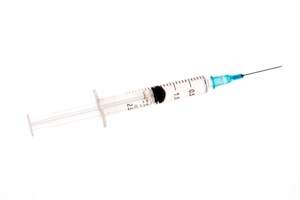Soon after the arrival of Columbus, detailed descriptions of the inventions of Indigenous Peoples began to make their way back to Europe. Not satisfied that “savages” would be able to generate such innovation, rumors began to spread that the Americas were simply a lost colony of Christians or Israelites. Such rumors still exist today and in fact continue to be discussed by archeologists.
But all of this aside, indigenous cultures have created thousands upon thousands of innovations that are in use today in the most modern of practices, be it a tub of popcorn at the movies, the administering of medicines with surgical precision or the removal of tartar from teeth in modern dentistry. In order to give some more credit where credit is due to our ancestral innovators, here are 10 Native inventions and innovations that changed the world. These are but a few examples of indigenous ingenuity, but highlighting them serves to unswathe yet another facet of hidden history.

Syringes, or Hypodermic Needles
Though Scotsman Alexander Wood is credited with inventing the syringe in 1853, in pre-Columbian times South American Indians used a type of syringe made from sharpened hollow bird bones attached to small bladders to inject medicine, irrigate wounds or even clean ears. Additionally, Indigenous healers also used larger and similar instruments for enemas.

Baby Bottles and Formula
Using similar technology as the syringe, the Seneca used washed, dried and oiled bear intestines with a bird quill attached as a form of nipple. Mothers filled them with a mixture of pounded nuts, meat and water.

Oral Contraception
An oral contraceptive is a substance taken by mouth to prevent pregnancy. Recorded instances of American Indians taking such substances date back to the 1700s, more than 200 years before the creation of a man-made substance by western medicine. One of the herbs used was the stone seed, employed by the Shoshone, while the Potawatomi used the herb dogbane.

Cigars
On a 1,000-year-old pottery vessel found in Guatemala, a Maya man is shown smoking a roll of tobacco leaves tied with string. The Maya word for smoking was sikkar, which became the Spanish word cigarro. Once settlers had learned from Indians how to cultivate tobacco, cigar factories sprung up. One of them, an early cigar factory in Pennsylvania, gave the cigar its playful moniker the “stogie.”
Pest Control
To combat insects such as lice infestation, the Paiute and Shoshone of the Great Basin, for example, washed their hair in a hot infusion made from sweetroot.

To fight other pests, pre-Columbian peoples built structures with cashew wood, while the Pima sprinkled ashes on their crops to thwart squash bugs. The Pueblo have used ground buffalo gourd to fend off garden pests, and Inca cotton farmers planted lemon verbena and burned it as a pesticide.
Petroleum Collection and Extraction

Although the discovery of oil in the United States is usually credited to Edwin L. Drake, who drilled an oil well in Pennsylvania in 1859, Native Americans were known to have sunk pits into the ground more than 400 years earlier in the Oil Creek Flats of Pennsylvania. These pits, which are 15 to 20 feet deep, were walled with vertical timbers that had been cut with stone axes.
Like many historians, J.A. Caldwell—who wrote about the oil pits—assumed the work was done by “a race of people who occupied the country prior to the advance of the Indian tribes.” However, the French general Montcalm, traveling to Fort Duquesne in 1750, said he observed the Seneca and other Iroquoian Indians set fire to the oil that seeped from the ground for ceremonial fires. They also slathered protective lotion (like petroleum jelly) onto their skin.
Bunk Beds

In the Northeast of the United States, the Iroquois have long lived in longhouses—long, extended buildings made of branches formed into a large half circle and covered with bark. Inside these longhouses were bunk-beds. A creation of two beds built one on top of the other. No thanks necessary, Ikea.
Pharmaceuticals
Take a step back in respect, Rite-Aid enthusiasts. According to Daniel Moerman, the foremost expert on North American Indian ethnobotany in the United States, North American Indians have medicinal uses for 2,564 plant species.

But many Native people say the actual number may likely dwarf Dr. Moerman’s statistics.
Since the times of the Spanish explorers, American Indian medicines have been used to cure colds with guiacum, heart ailments with dogbane, and employ foxglove and lady’s slipper as a sedative. Said Steven R. King about Brazil’s well-known “slobber mouth plant,” the jaborandi tree, had Europeans but listened, a dry-mouth-syndrome product may have come years earlier.
Chewing Gum

Bubbulicious—remember that gum? Well it may never have gotten its start if not for the sapodilla tree. The Mesoamerican Indians chewed the milky chicle, which became today’s chewing gum. And you thought you were being sneaky, Chiclets—we caught you copying Indians!
Lacrosse
This even the Europeans acknowledged at the time, but it never hurts to be reminded that Turtle Island’s Indigenous Peoples created an entire sports genre. The Iroquoian Creator’s game of lacrosse has been played for centuries. Yes, it was first played by the Iroquoian tribes who honored the game as one that was played for the Creator’s enjoyment. We’ve come a long way since the Tewaaraton awards.
© 2017 Indian Country Today Media Network, all rights reserved. https://indiancountrymedianetwork.com